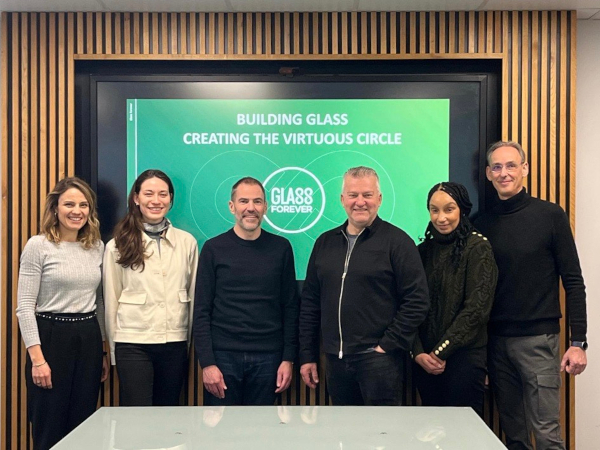Date: 14 November 2007
Dr. McLenaghan joined the company in 1998 to lead the £85 million construction of its float glass manufacturing plant in Eggborough, North Yorkshire.
‘Change’
For this position, he oversaw its startup recruitment programme, a role for which he had won a National Training Award at his previous company, DuPont. He later received the same award (and many others) for his work at Saint Gobain Glass, but before entering manufacturing management he had worked as a scientific researcher. It’s not a career move that too many make, so Dr. McLenaghan explains his reasons behind the switch:
“I was in the United States working for ICI in a research role, and the site director of the plant I was based at saw something in me. To this day I’m not sure what, but he asked me if I’d be interested in moving to manufacturing. The research I was doing was at the interface of making products, so I’d already worked on production units but only on running trials.
“Very early on in my career, my wife worked for a company that made pregnancy tests. She had been a scientist developing this product, and ultimately it revolutionised the way these tests worked. It moved them away from adding two chemicals together into just urinating on the tube, making it very easy to use, and you could get an answer in about a minute. One day we were out together and we went in to Boots and she said ‘I make that.’”
McLenaghan says there was ‘some little thing’ about this that stuck with him - “something about being able to have a tangible outcome to what you do and feeling proud.”
Continuous development
It’s no real surprise that he came to work at Saint-Gobain. The French firm, founded in Paris in 1665, is famed for innovation and spends over £250 million annually on research, last year alone filing over 220 patents. About 40 percent of products sold by Saint Gobain Glass have been developed in the last two years. This close contact with product development is important to Dr. McLenaghan, and as he says, “I think if you’ve got a scientific mind or brain it doesn’t go away, no matter what you do.”
It is for the application of this ‘scientific mind’ to recruitment that Dr. McLenaghan has gained much of his acclaim. Both of his National Training Awards were given for his work building new plants and recruiting people for them, though the methodology used in each case ‘was a little different’.
“We felt that we could very easily train the technical skills if they had the right behaviours and capabilities,” he says. “So therefore we recruited on those criteria. We brought in people that had absolutely no manufacturing experience, and certainly no polyester film making experience.
“We brought in people with a very positive approach and a very high standard with regards to things like safety and quality, and we used competency based assessments for that.”
In-depth
This recruitment process was as involved as it was well thought out. “We made commitments that everybody would be tested and would have the opportunity to show what they were capable of, and the application process was quite long as a result,” he says. In each case, the excellent reputation of the company allowed him to be selective. For the Eggborough plant, there were 4,000 applicants for 42 operator’s jobs.
He explains his methods in more detail: “We had adverts that went out, and road shows to explain the company to people. You would then have to write to Saint Gobain Glass to ask for an application form. And it wasn’t a normal application form; we didn’t want to know your CV, we didn’t want to know old you were, we didn’t want to know what you’d been doing.
“Instead, there were five competencies. On the form, we asked them to describe a time or event in their life that would exhibit to us that they had used this competency. Having got that, we actually didn’t do anything with them at that point. And of the 4,000 people that asked for a form, only 3,200 filled them out.”
“So immediately we’d eliminated those that perhaps thought ‘I don’t like this’, or ‘I don’t have good answers to this’, or were maybe a bit lazy.”
The process then involved several stages, from IQ, numerical and verbal reasoning tests to group exercises until the number had shrunk to 200.
Read the entire story on the source link below.












Add new comment